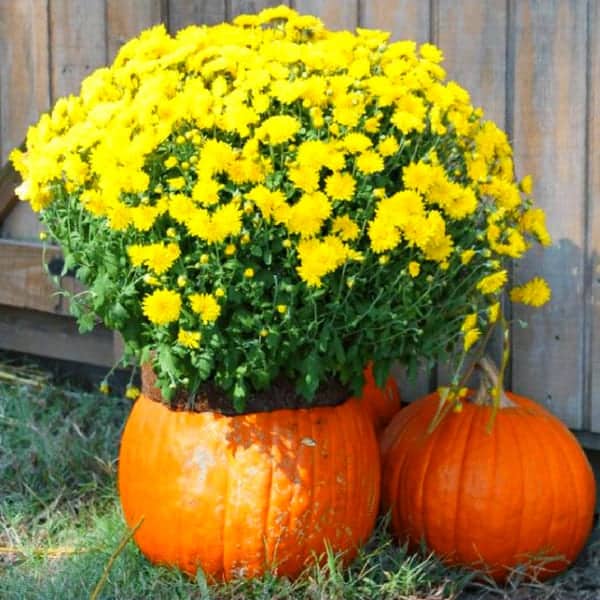One of the most interesting facts about Mallard ducks is that almost ALL domesticated ducks are descended from them. They are, essentially, the foundational duck breed. If you’ve been on this planet for very long, you have likely seen Mallard ducks more than once (even if you live in the city).
Let’s jump into the must-know facts about this intriguing duck breed! There is one very special fact you don’t want to miss (hint: you may be inspired to visit a certain hotel).
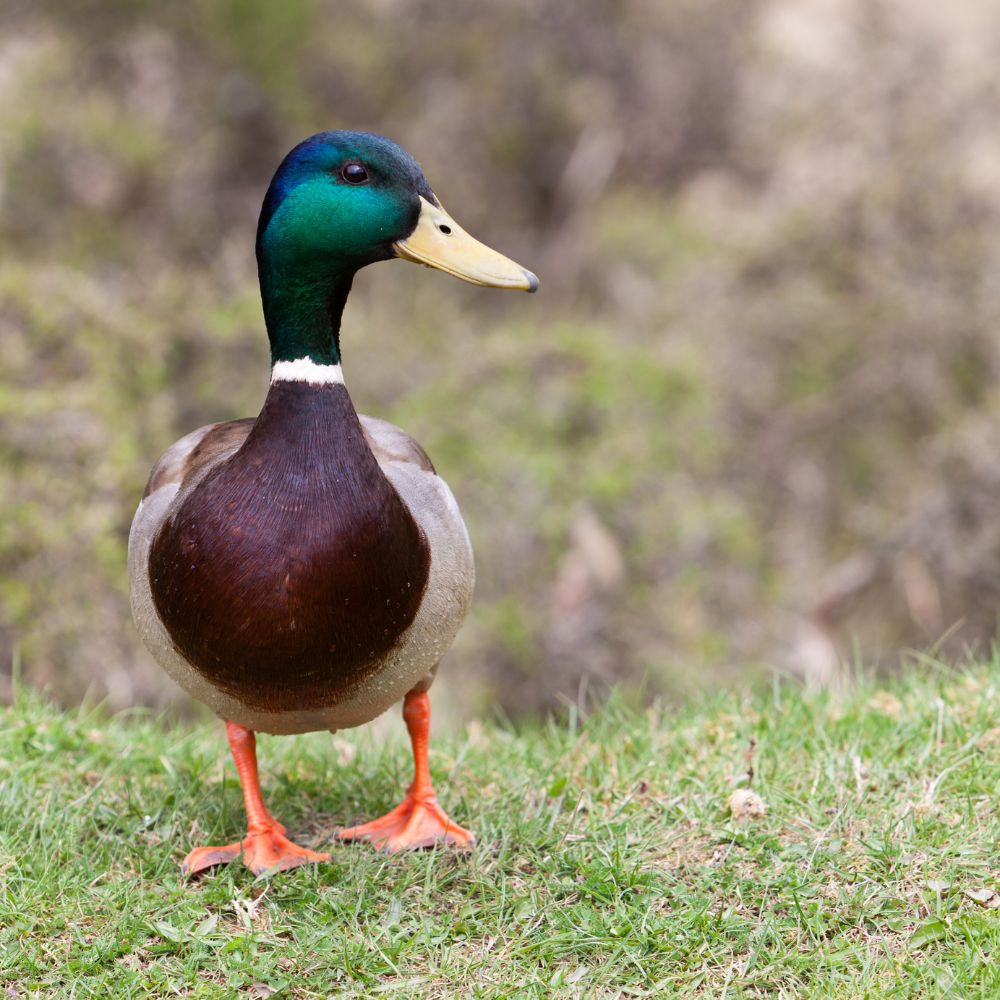
Table of Contents (Quickly Jump To Information)
Must Know Facts About Mallard Ducks
Where Did The Name Mallard Come From?
You can search high and low and find several different answers for why a Mallard duck is called a Mallard. One theory is that it is just a common name that comes from an Old French word that means “male”. It’s pretty simple and common but it fits the bill (so to speak) since most domesticated ducks are derived from the Mallard.
Another theory is more involved, involves a drunkard, and is quite entertaining. You can read about that here. There are more theories out there too.
Regardless of which theory you lean toward, they all seem to ignore the female Mallards. Poor girls. I suppose we can just call them all by their scientific name, which is Anus platyrhynchos. Whew, that’s a mouthful.
What Areas of the World Do Mallards Live?
Mallard ducks can be found in many places around the world – from Asia to Europe, and of course, North America. The majority do, however, migrate to the central and southern United States due to a lack of ice on the water (which they prefer).
The Mallard is distributed throughout North America, Europe, and Asia and has been introduced to many other parts of the globe. It is found across Canada but is most numerous in the prairie provinces. Mallards have recently been spreading eastwards and are firmly established in New Brunswick along the St. John River. Mallards are rare in Prince Edward Island and Newfoundland and Labrador, being replaced there by the closely related American Black Duck. Mallards have also spread north into boreal, or northernmost, forest zones in eastern Canada and along the James Bay and Hudson Bay lowlands.
Hinterland Who’s Who
Are Mallards Dabblers or Divers?
Ducks can be divided into two main groups. Dabbling ducks and diving ducks. Mallards fall into the dabbling duck group which means they eat mainly on the surface of the water. They do dunk their heads into the water but they don’t dive down into the water.
Do Mallard Ducks Migrate?
Yes, they do. They can fly over 800 miles in a single migration trip. That’s impressive. Check this out:
The average distance traveled by individual birds during fall migration was almost 875 miles. One of the first mallards (a drake) ever marked with a GPS satellite transmitter in Arkansas flew more than 500 miles during spring migration, from Minnesota to Saskatchewan, in only four days. This same bird made a remarkable one-day flight in early fall from Saskatchewan to south-central Iowaa distance of more than 900 miles!
Ducks.org
You have probably seen flocks of these migratory birds forming V formations across the sky from time to time. It’s always inspiring to see how well they fly together without a traffic controller. Amazing, really.
Are Mallard Ducks the Same As Wood Ducks?
Nope. If you aren’t a duck expert and aren’t specifically looking for details, then one could understand the confusion. However, if you take a moment to really compare them you can clearly see a difference.
Wood Ducks are a bit smaller, have distinct crests on their heads, and have different coloring and markings that set them apart. Plus Wood Ducks whistle and squeal while Mallard quack.
Both breeds are gorgeous and include iridescent green within their other color variations. They at least have those things in common.
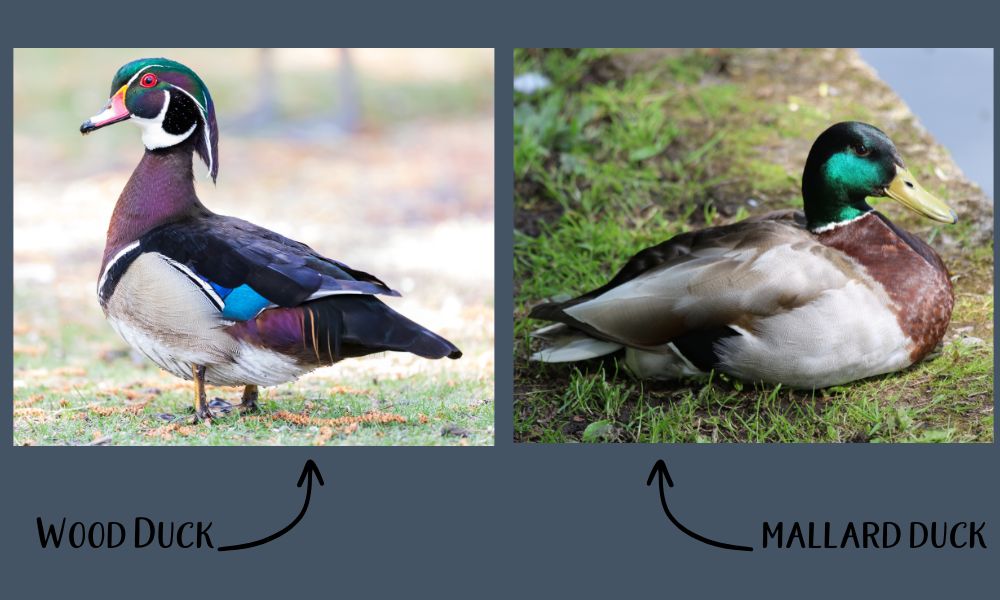
Do Mallard Males Look Different Than Mallard Females?
Yes. As is the case with many bird species, the male Mallard ducks sport a more colorful array of plumage (feathers). In the case of Mallards, the males (or drakes) have an iridescent green head, a yellow bill, a brown chest (aka breast), and a lovely white ring around their necks.
The female Mallard, or hens, are brown and have orange and brown bills. Although they are not as fancy as their counterparts, they are still beautiful ducks.
Are Mallards Rare?
No, they aren’t. There are a lot of Mallard ducks in North America and other places too (as they are found in most of the Northern Hemisphere). In fact, it is estimated that there are over 11 million Mallard ducks in North America alone. That’s a lot of ducks.
Whether you know it or not, you have probably seen many Mallard ducks yourself. They are everywhere, including urban and suburban city parks, ponds, and lakes. Mallards can also be found in less common places like marshes and wetlands in remote locations.
What’s So Special About How Mallards Fly?
Mallard ducks can spring up right out of the water without much ado. It’s quite interesting to see them go from swimming casually to instant flight, but they can do it. They can also fly vertically which is equally as impressive. This technique is especially handy for escaping predators.
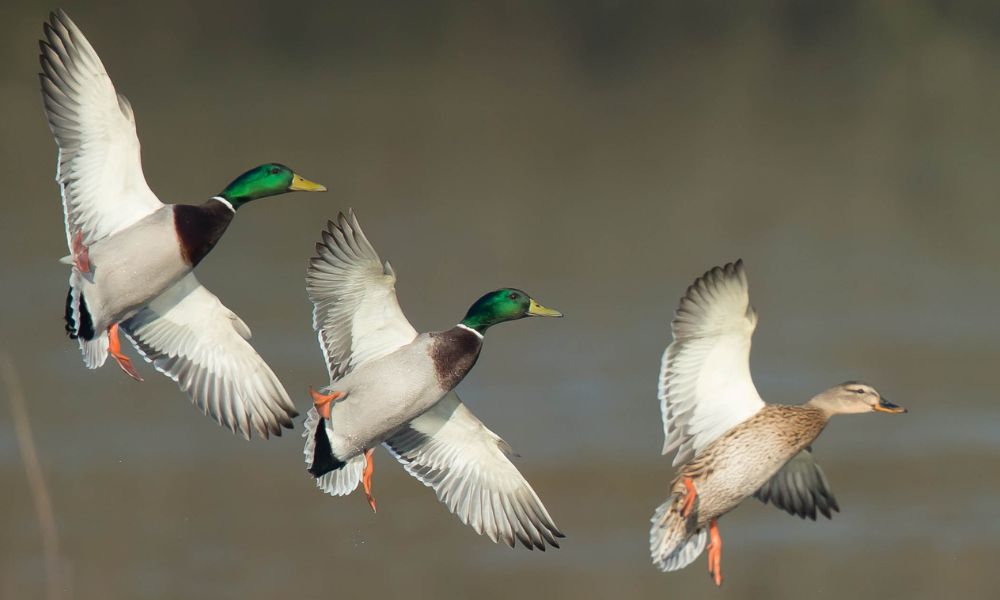
Do Mallard Ducks Pair For Life?
No, they do not. However, they do have a pairing ritual during each breeding season. This is called seasonal monogamy. Because of this, you will often see pairs of Mallard ducks, just not the same pair for life.
Are Mallard Duck Eggs Edible?
Mallard hens lay around 140 eggs a year. They are just like any other duck eggs and you can eat them. If you are raising the ducks yourself, the eggs will taste pretty much just like any other duck you would raise (provided they are eating the same food).
If you are wanting to try a wild Mallard duck egg, the flavor may be different because their habitats and diet are different than that of domesticated ducks.
Do Mallard Ducks Make Good Pets?
Mallard ducks can make good pets. They aren’t snuggle bugs by any means, but they can be distant companions. They are pretty self-sufficient and low maintenance. You can read this article to learn more about raising ducklings: How to Raise Ducklings.
Are Mallard Ducks Famous?
Yes! Mallard ducks are indeed famous. Have you ever heard of The Peabody Hotel in Memphis, Tennessee? If you have, then you have likely heard of The Peabody Ducks. Guess what? They are Mallards!
How did the tradition of the ducks in The Peabody fountain begin? Back in the 1930s Frank Shutt, General Manager of The Peabody, and a friend, Chip Barwick, returned from a weekend hunting trip to Arkansas. The men had a little too much Tennessee sippin’ whiskey, and thought it would be funny to place some of their live duck decoys (it was legal then for hunters to use live decoys) in the beautiful Peabody fountain. Three small English call ducks were selected as “guinea pigs,” and the reaction was nothing short of enthusiastic. Thus began a Peabody tradition which was to become internationally famous.®
The Peabody Hotel Website
The Peabody Ducks became ultra-popular. Several years later, a former circus animal trainer started training them to do a special walk, called the Duck March, to the hotel fountain every day and now this is a daily event that attracts thousands of tourists every year.
Read all about this adorable and intriguing show here.
What Do Mallard Ducks Eat?
They love insects of all kinds, snails, small fish, pond weeds, grass, and other water and land vegetation. They will also eat frogs, earthworms, acorns, grains, and aquatic invertebrates.
Backyard ducks will eat all of the above, but will also need duck feed. You can read more about this in the following articles: Pet Ducks – Good or Bad Idea? and What Do Baby Ducks Eat? Ultimate List Of Treats, Feed, Fruits, & Vegetables.
Is Caring for Mallard Ducklings the Same as Chicks?
Not quite. Caring for Mallard ducklings is similar, but a little more complex. First of all, ducklings need more niacin than chicks. You can, however, feed them a high-quality chick starter and add a niacin supplement. Also, according to Cackle Hatchery, you have to be very careful when introducing ducklings to water.
Delivery Instructions: Limit to 4 drinks of warm water, take away water and repeat every 15 minutes for first 1 hour. This prevents them from going into water shock.
Cackle Hatchery
Is a Permit Required to Own Mallard Ducks?
No. HoweCayuga Duck – Ultra Cool Duck Breedver, domestic Mallards have to be marked in some way to set them apart from wild Mallards. You can put earrings on the hens and ties on the drakes…just kidding. The hatcheries will take care of this for you.
Hatcheries will mark them by removing a back toe at hatching, or something similar, so the US Fish and Wildlife Department can tell that they were not removed from the wild if they were to check. It would be a rare occasion where such an occurrence would happen, but now you know.
Other Duck Articles
- Cayuga Duck – Ultra Cool Duck Breed
- Runner Ducks 101
- Pekin Duck – The Most Popular Duck of All
- Rouen Ducks – One of the World’s Largest Duck Breeds
- Call Ducks – Adorable, Miniature, Irresistible
- Khaki Campbell Ducks – An Amazing Duck Breed You Will Love
- 16 Duck Breeds For Colorful Eggs! Duck Eggs: Nutrition & Buyer’s Guide
- Sexing Ducklings By Quacks

A happy wife, mother, teacher, writer, hobby farmer, lover of chickens, and contributor to Pampered Chicken Mama!

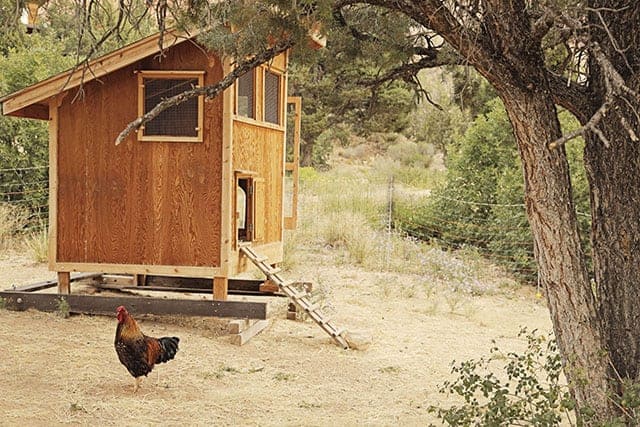
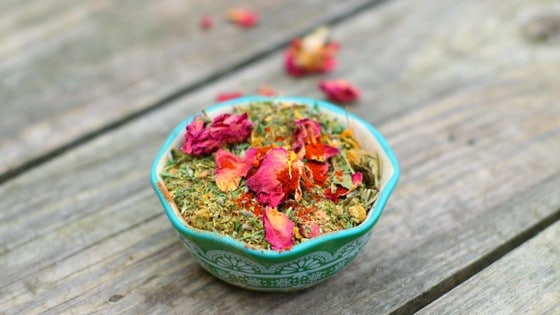
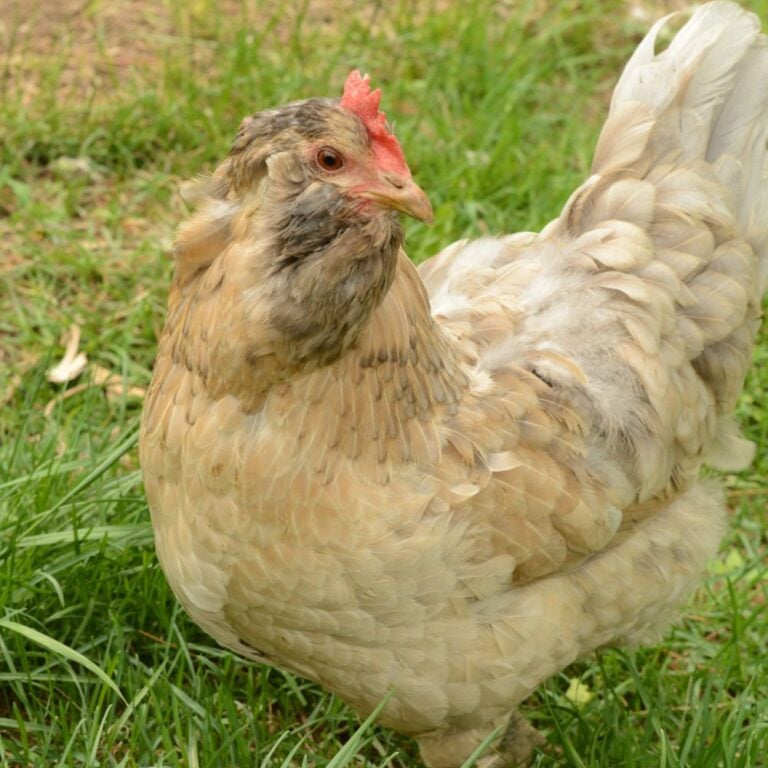
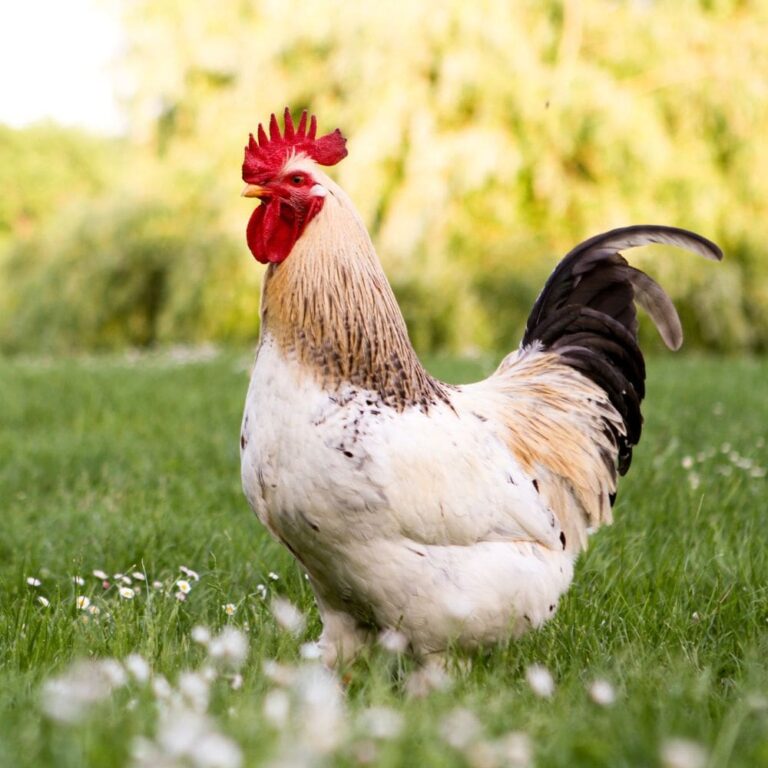
![How To Care For Baby Chicks Weeks 1-6 [Podcast]](https://thefrugalchicken.com/wp-content/uploads/2017/03/baby-chicks-weeks-1-6.jpg)
